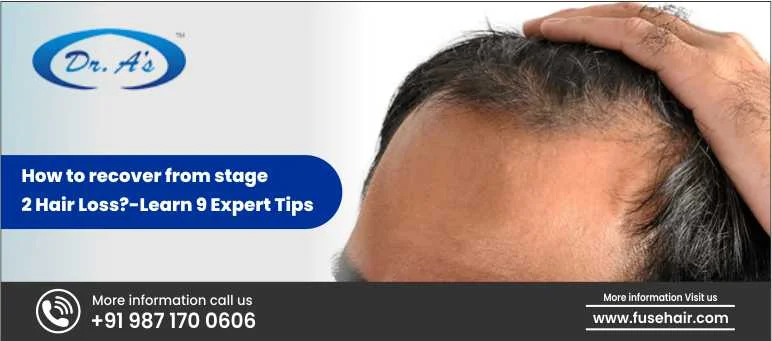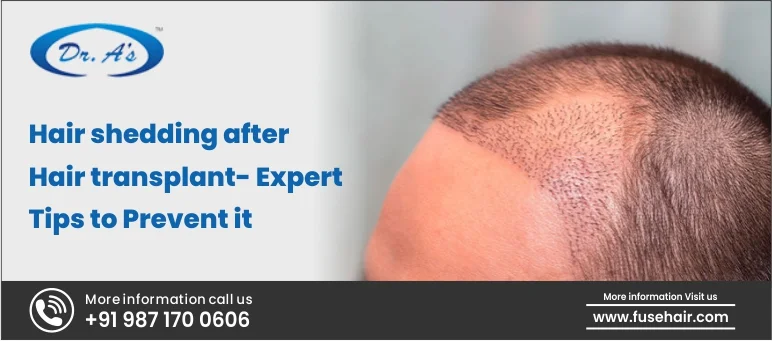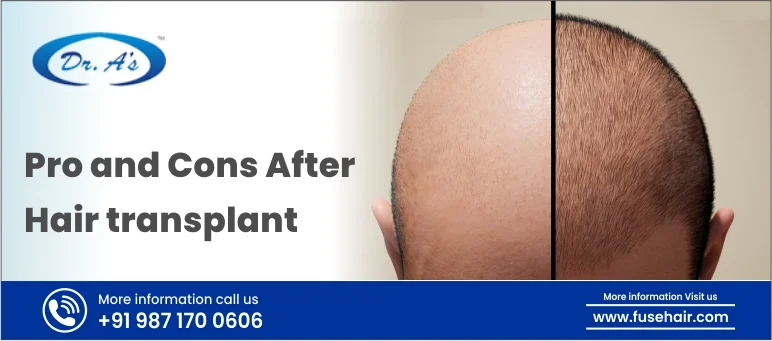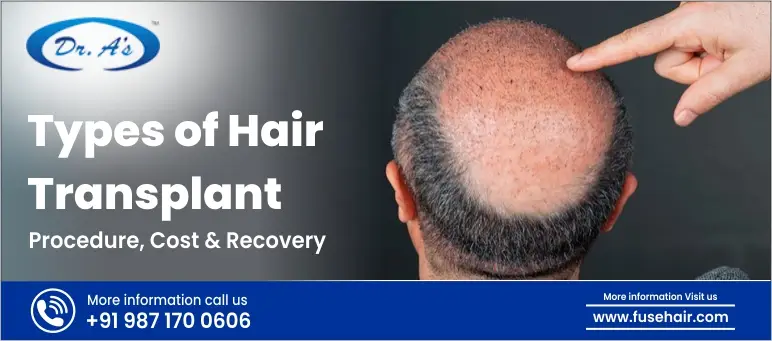
Enjoy the magical monsoon when there is some relief from the scorching heat, but at the same time, this can leave your hair pretty much like a limp rag. Do not fear! With this season, welcome healthy and vibrant hair. Here are some monsoon hair care tips to keep your mane frizz-free and nourished. From gentle cleansing to protective styles, here’s how to win expert tips against humidity and rainwater.
For personalized advice or to address specific concerns, Dr. A’s Clinic, staffed by experienced trichologists, offers best hair transplant in Delhi. Let’s unlock the secrets to luscious, monsoon-ready hair!
Essential Monsoon Hair Care Tips: 9 Strategies for Healthy Hair
Here are 9 Monsoon Hair Care Tips one should look for healthy hair during monsoon times:
-
Shampoo Wisely
Hair care in rainy season is of utmost necessity! Monsoon downpours might call for more frequent hair washing, but resist the urge to overdo it! Frequent washes with harsh shampoos can strip away the scalp’s natural oils, leaving hair dry and brittle. Aim for 2-3 weekly washes with a gentle, sulfate-free shampoo.
Consider a clarifying shampoo once a month to remove build-up from rain residue or dust, especially in dusty cities. Opt for shampoos with hydrating ingredients like aloe vera or coconut oil to cleanse gently while providing some moisture – a crucial balance required to prevent hair fall during monsoon.
-
Condition Effectively
Don’t underestimate the power of conditioning during the monsoon! While shampooing removes dirt and build-up, it can also leave hair stripped and vulnerable to frizz. Conditioning steps in as your hair’s monsoon savior. Opt for a blend-rich creamy conditioner like shea butter, almond oil, and argan oil, as these deep conditioners can slip into your hair for repair and smoothness.
Generously saturate the mid-lengths and end with the conditioner, paying special attention to the most damaged areas. Allow it to stay on for a few minutes for better absorption, and rinse off completely. If your hair is dry or curly, try using a weekly deep conditioning treatment to get even more moisture in your hair. With more focus on conditioning, you can give your hair proper nourishment and keep it soft, manageable, and frizz-free throughout the monsoon.
-
Care for Scalp
When it comes down to it, healthy hair starts with healthy skin. When it rains, you need to take a little more care of your hair and scalp, which is usually not considered by the majority of people. Rather than the scalp becoming too dry, with its intrinsic oil producing sebum to grease and soothe the inflamed scalp skin, collecting moisture and creating an environment for the secret growth of such fungi such as Malassezia (most common yeast behind dandruff), one has to fight back with a well-structured mild dandruff-control shampoo that contains ingredients such as ketoconazole or pyrithione zinc.
Also, scalp exfoliation will prevent dead skin and product build-up from clogging your pores and worsening the condition of your scalp. Use a scalp scrub with gentle exfoliants such as sugar or jojoba beads. By practicing some hair rituals, we can easily show the nourishment and care our scalp needs, which will only reflect on the good hair growth monsoons leading to worsened hair conditions in summer.
-
Utilize Microfiber Towel
Hair care tips in rainy season also include the use of good accessories! The regular bath towel is coarse in texture; thus, the cuticles become rough and increase frizz and damage to hair. In turn, microfiber towels are much kinder to hair since the fibers are ultrafine. They quickly and efficiently absorb any additional moisture, hence taking a shorter time for your hair to dry up and become susceptible to frizz.
This aspect is crucial during the monsoon when humidity tends to be very high. Unlike an ordinary towel, it will not create any kind of friction or breakage when you pat your hair to squeeze the water out of it. Purchase a microfiber towel for these purposes, specifically for hair, to have a gentle and absorbent hair accessory to keep your monsoon mane under control and healthy.
-
Minimize Heat Styling
Hair fall in monsoon is common but it can even get aggravated with maximum use of heating appliances. Hair damage is said to be possible at any moment from excessive styling using hair straighteners, curling rods, and blow dryers. It does add up during monsoons. Heat styling, if overly done with, can tend to give more frizz and breakage problems when the conditions are more humid.
If one needs to heat-style, do it on the lowest heat setting possible and always, without fail, apply a protectant spray so that a shield is created over the hair strands. Embrace the natural texture of your hair as much as possible during monsoons. Rather than using a heated styling appliance, allow the hair to dry in an open atmosphere and use a hairdryer in a relaxed setting. It will help avoid or lower the heat damage, and your hair remains healthy and manageable throughout the rainy season.
-
Opt for Protective Hairstyles
If you have a favorite hairstyle, you might have to change it up a little for protective styles during the monsoons to protect your hair from the elements. Examples of protective styles include braids, buns, and updos that reduce contact between the hair and rainwater or any other atmospheric moisture. This not only reduces frizz and tangling but also keeps hair fall at bay, which might otherwise be caused by over-wet combing of fragile, rain-soaked strands.
Braiding your hair will keep it tucked away and protected from the elements as long as it is a low-maintenance protective style. Updos like buns or twists do this just fine; they add style to your look while offering protection. Because they require minimal manipulation and effectively lock moisture, protective styles make it easier for you to strengthen your hairline and reduce the need to style and manipulate.
-
Nourish with Proper Nutrition
One of the topics covered in the Indian Journal of Dermatology (IJD) is proper nutrient intake to help your hair grow healthy. Fish, lentils, and eggs, which are protein-rich foods, are important as they help form building blocks for hair growth, with proteins playing a major role in the development of hair. It should contain green vegetables filled with vitamins A and C, which are required to maintain the scalp’s health. Rich in biotin, zinc, and iron are nuts and seeds.
Another good practice is to keep the body well-hoisted because water keeps the scalp and hair moist from within, compensating for the drying of hair that is experienced during the monsoon. A nutrient-sufficient diet helps keep your hair with the basic needs that require it to become firm, healthy, and resilient to keep hair fall control in monsoon.
-
Consult Professionals
Indeed, the internet is a source of infinite knowledge, but sometimes complex situations call for consulting with a professional. To be sure you’re getting good advice, find a professional affiliated with an organization, like the BBB, or whose work is endorsed by governing agencies. Look for experience related to your situation and confirm qualifications via licensing boards. Never be shy in querying their approach or area of expertise. Remember, a professional can give you tailor-made guidance that addresses your unique concerns and offers appropriate solutions for specified needs.
One such golden professional would be Dr. Arvind Poswal—renowned for expertise through compassionate work. With over 20 years of experience, he is the world’s only doctor to win Hair Site’s award for documenting the most successful hair transplants in Delhi, achieving this for 7 consecutive years. Renowned for his numerous innovations in surgical techniques and instruments, he is rightly called the father of hair transplants in India. Dr. Poswal’s dedication and skill make him a trusted choice for personalized guidance and tailored solutions.
-
Combat Dust Build-Up
Conquering dust buildup requires a two-pronged approach: prevention and removal. Minimize dust entry by keeping windows shut during peak pollen seasons and using doormats to trap outdoor particles. Embrace frequent vacuuming with a High-Efficiency Particulate Air (HEPA) filter that picks up minuscule dust mites and allergens, and change the air filters more often than recommended by the manufacturer. More regular washing of bedding and wiping of other surfaces helps reduce accumulation.
Additionally, consider using air purifiers to capture airborne particles and maintaining a clutter-free home to eliminate dust-collecting items. Cleaning curtains and upholstery regularly and opting for hard flooring instead of carpets can also make a significant difference. All you need to do is follow these strategies to make your living environment cleaner and healthier.
Conclusion
Follow these expert tips and strategies to keep your hair healthy and vibrant throughout the monsoon season. You can easily control your hair when it is nourished and free from frizz with some care and attention from your side.
Dr. A’s Clinic, running under the direction of Dr. Arvind Poswal and manned by professional trichologists, provides hair treatments and can be the best place for your hair solutions this upcoming rainy season!





























































































































































































